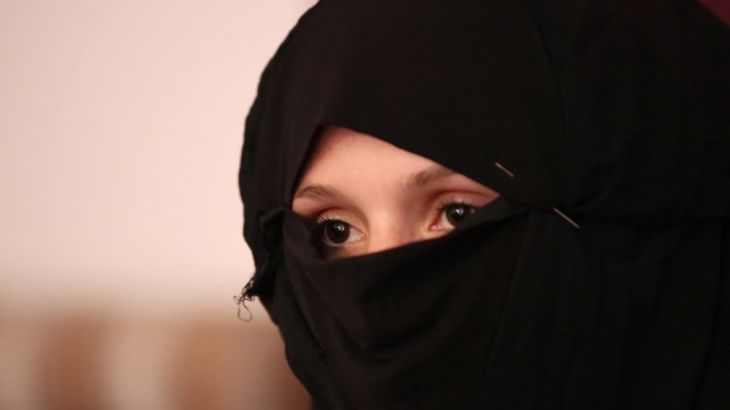
Women of ISIL: Life Inside the Caliphate
Women who lived and worked under ISIL share their stories, revealing a regime both brutal and uncompromising.
Filmmaker: Thomas Dandois
Teachers, nurses, mothers, torturers – under the Islamic State of Iraq and the Levant (ISIL, also known as ISIS) group’s rule, women played crucial roles in the organisation, some as willing participants, others as coerced victims.
Keep reading
list of 4 itemsMoscow theatre attack suspects show signs of beating in court
Four men showing signs of severe beating charged over Moscow concert attack
Russia mourns Moscow concert hall attack victims as death toll rises to 137
ISIL, it was like a disease, an epidemic like the flu that infects everyone. Unfortunately, it infected my home. It infiltrated through my husband.
Through a series of rare testimonies, women from Syria and Iraq share what everyday life was like under the armed group.
Their accounts reveal an organisation that is both brutal and uncompromising.
Women hired as religious police patrolled the streets, looking for people who broke dress codes or committed other moral offences. Teachers taught schoolchildren Islamic lessons beyond their age. Nurses were forced to work at ISIL-controlled hospitals. Schools were closed and repurposed as training centres. Make-up was forbidden. Movement was restricted.
And torture was a regular punishment, used for offences as minor as wearing nail polish.
In Women of ISIL, we speak to the women fully integrated into the organisation, playing active roles in punishment and torture, as well as those who resisted through everyday acts of defiance, including running a salon, or teaching schoolchildren in private.
They recall a time when even the police were policed, spies were surveilled, and women paid the ultimate price for a violent rule of law.
FILMMAKER’S VIEW
By Thomas Dandois
Women of ISIL is the last chapter of a trilogy about life under the armed group Islamic State of Iraq and the Levant (also known as ISIS). Originally, I did not intend to go that far.
In 2015, when I discovered that many men had deserted and were ready to share their testimonies of life and death under the armed group, I thought I would do this one film – ISIL Deserters Speak Out – and then move on to another subject.
But while shooting the first documentary, we realised that there was another story to be told – about the children and teenagers living under ISIL. So we decided to make Ashbal, the Lion Cubs of the Caliphate.
Later on, during the screenings, the audience asked us about the situation of women and we felt that the trilogy had to be completed.
The women who lived and worked under ISIL have a lot to tell because many are both executioners and victims of this system.
But it took about two years to make the film and to find women who agreed to speak to us.
We got in touch with about 100 women – housewives, nurses, teachers, members of the Islamic police – but most of them changed their number after the first contact. Then they disappeared. Only a few of them agreed to speak in front of the camera about “Dawla” (ISIL) and the terrible things they saw and had to do.
Most of the interviews took place in Raqqa in Syria and Mosul in Iraq, the two capital cities of the ISIL “caliphate”. What is left of them is just a field of ruins.
I refused to interview women in prison, because I wanted them to feel free to say whatever they wanted to say. I offered them the opportunity to speak anonymously because most of them were afraid. Some of them were also very ashamed of what they had done to other women, like arresting and torturing them.
ISIL did not only need male fighters but they also needed women in key positions. For instance, only women were authorised to search other women or, as one of them said, to place explosive belts on female suicide bombers. I wanted to film some of them.
They were not all victims. Some told us they swore allegiance voluntarily. One of them broke down telling us about the atrocities practised during the torture sessions.
All of the women were trying to come to terms with their experiences as they recalled what they saw and what they did living and working under ISIL.
The purpose of the trilogy is to document how the “ISIL machinery” really worked, to give an insight into the inner workings of the armed group through the personal testimonies of perpetrators and victims.
It seems fundamental to do this work now because the story is not over yet.
In Mosul, I met – without being able to film them for security reasons – women who are still in favour of the so-called Islamic State. They told us: “It is not over, we will come back, we will bring back the caliphate and regain power.”
In Syria and Iraq, everybody knows that there are still some sleeping cells. ISIL is now in Afghanistan, in the Philippines, in Indonesia. The monster is dead but the beast is reborn from the ashes elsewhere. I do not like to sound alarmist, but those who think ISIL belongs to the past are making a big mistake.